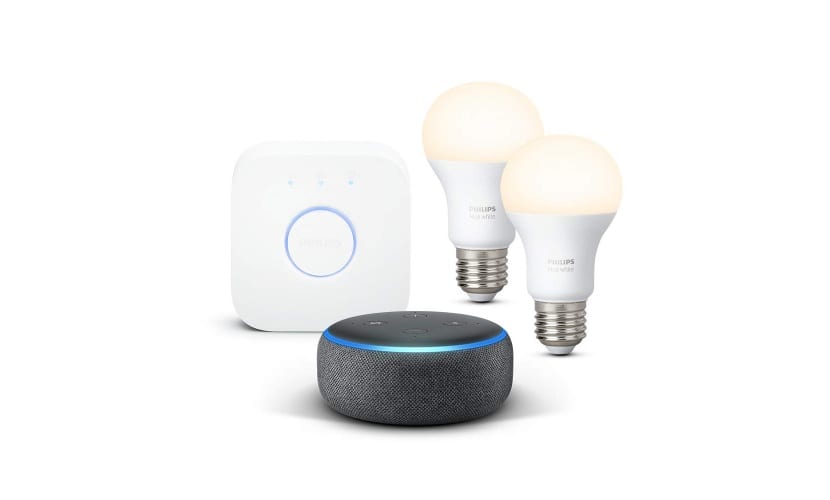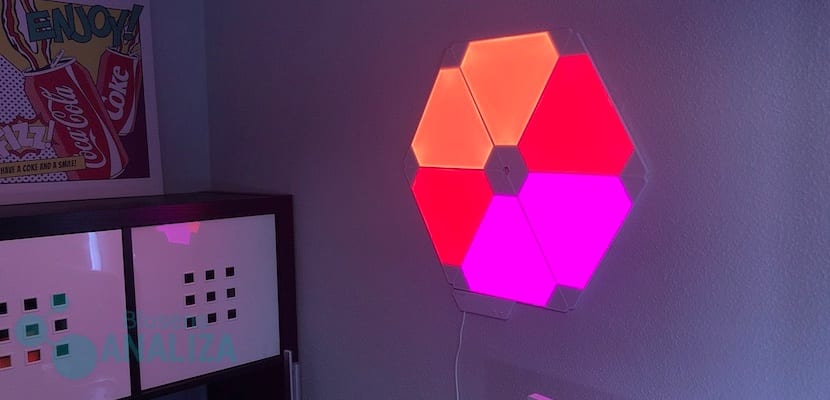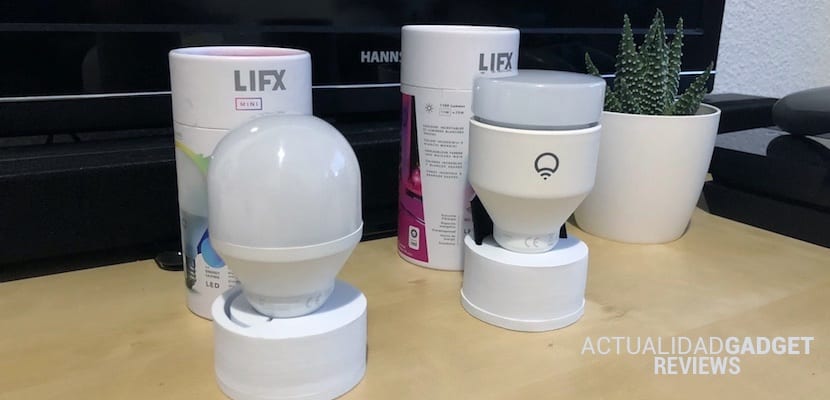En Actualidad Gadget We have numerous analyzes of products designed to make your home a smarter place, lighting, plugs, sound, virtual assistants, vacuum robots... We have everything you can imagine, and that is why we have had the idea of being able to make a definitive guide with all of them. the necessary steps and recommendations to turn your house into a connected home in which you can make the most of the time and all the features that these functionalities provide you. We bring you the first edition of "The Connected Home Guide" in which we are going to talk about smart lighting, everything you need to know before purchasing a product, its varieties and how to use them.
Types of smart lighting
Those that require a connecting bridge
These are the bulbs that usually work by RF, that is, the bulb does not have WiFi on its hardware, but instead there is a connecting bridge which is responsible for dominating all the bulbs. Most of them have the Zigbee protocol, that is, they are universal. An example is IKEA bulbs and Philips Que bulbs that are compatible with each other. Some of these bulbs also have more features like Bluetooth inside. One of their advantages is that they work even without an internet connection and are more independent. These are the most recommended if you want to adjust the entire home to smart lighting.

Standalone WiFi bulbs
This type of bulbs although they can be grouped by applications, they are totally dependent on the internet connection even though they often have Bluetooth also for its handling. These bulbs are generally a bit more expensive, although they provide great independence if we intend to use them as ambient light or we simply want to do without the connection bridge.
Types of smart lighting products
Although there are almost infinite products, let's focus on the basics, its advantages and its drawbacks.

Standard socket bulbs
This is one of the most standardized ideas, we have them both of the Zigbee type and of the WiFi type and of many brands such as Xiaomi, Philips, Lifx ... etc. We recommend that you take a look at our reviews of some of these bulbs of all kinds. The advantage of this type of bulbs is that you do not need to change the installation or the lamps, that is, the fastest and easiest thing. On the other hand, these bulbs are often expensive if we compare them with other products in the sector and we have to take into account factors such as brightness, which is mentioned with the spelling "XXX lm" or lumens.

LED strips and ambient lighting
We find many types of ambient lighting in this type of product and that is precisely where users usually start. There are good ideas like placing LED strips in interesting locations. These LED strips usually allow you to adjust the intensity, color and other very interesting characteristics. In addition to the LED strips we also have small bulbs that have RGB lighting for example for auxiliary lamps and even panels from brands such as Nanoleaf that allow an interesting relationship between decoration and lighting.
Smart lamps
We also have the most expensive version available although it is usually the one that offers the best design quality, smart lamps. We have from ceiling lamps to LED ceiling lights and even some type of office lighting, in this section we have a good range of interesting products and it is the best. This type of smart lamps are especially recommended for desks or bedside tables, where they will accompany the decoration without taking up excessive space, they are more interesting. Although we also have smart lamps with Zigbee protocol such as the Hue from Philips, it is easier to find them via WiFi like those from Xiaomi.
Smart light accessories
It is very important that we emphasize the purpose and constant utility that we are going to give to our intelligent lighting, therefore we must take into account these factors:
- That the bulbs or devices that we install are compatible with each other.
- That they have software support or a brand that ensures updates to ensure network security.
- The fact that we have devices that have accessories as buttons, different extension kits or whatever we could imagine.
- Make sure we like the management app lighting compatible with the devices we want to install.

Taking into account all this we have many brands to choose from, we tell you our recommendations:
- Zigbee lighting: In this section, the Philips Hue group is unmatched, the smartest option if we seek to equip the entire house in full since its application is good, the compatibility is absolute with a myriad of brands and protocols and it has an important support. In addition, they are compatible and extendable with the IKEA kit, so the combination of both is very good value for money.
- WiFi lighting: This type of bulbs is where we will find more variety, however, it is very focused when it comes to limiting ourselves with ambient lighting or the possibility of choosing to illuminate a few rooms. It is the best option if you only want to illuminate a specific area or do not want to opt for alternatives that have "connection bridges" as happens with the Zigbee protocol.
It is clear that it is easy for us to opt for the start of intelligent lighting, But we hope that with our help in this first guide you will be able to know what the differences are between some types of intelligent lighting and others and above all you can choose the device that best suits your needs. We recommend that you take a look at the video that heads this guide because we resolve many questions in a practical way and that you stay tuned to the website. Actualidad Gadget because we are going to bring you more tutorials on how to configure and maintain your smart lighting perfect with simple steps. We warn you, smart lighting and connected home are addictive, and you may end up buying more and more products.
They left out what I consider to be the most economical long-term way of smart lighting and that is by putting in smart switches with wifi.
Hello Gabriel.
You are absolutely right, WiFi switches are the best, but they have a lot of problems in some installations (especially old ones). However, we are not going to leave them out, we will talk about them as "accessories" in another section of the guide, since they are more electronic than lighting products even though they are related. Stay tuned. A hug.